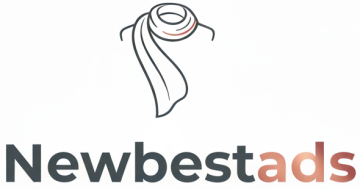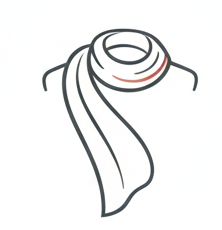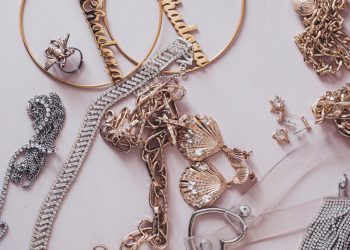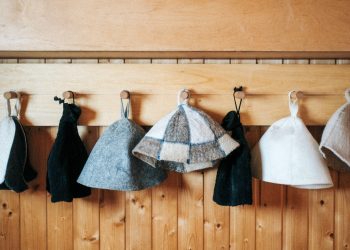Fashion has never been about fitting into a mold—it’s about celebrating individuality. Yet, too often, people approach clothing with the mindset that there’s a “perfect” body for fashion. In reality, style becomes powerful when it aligns with the body you have and the personality you want to express. The idea is not to conceal or disguise but to highlight your favorite features while creating harmony and balance in your overall look.
As we enter an era where inclusivity in fashion is more than just a buzzword, the focus is shifting toward helping people dress for their specific shapes rather than chasing one-size-fits-all ideals. By understanding your body type and playing with proportions, cuts, and fabrics, you can transform clothing into a form of self-expression. Below is a thoughtful exploration of fashion strategies for different body types—guidelines that encourage confidence without boxing anyone into rigid categories.
Understanding Body Types: A Framework, Not a Rulebook
Before diving into specifics, it’s important to recognize that “body types” are broad categories—pear, apple, rectangle, hourglass, inverted triangle, and petite/tall frames are common classifications. These labels are not meant to limit you but to provide a starting point for understanding balance in proportions. Every individual is unique, and most people don’t fit neatly into one category. What matters is identifying your favorite features and using clothing to create the effect you want.
The Pear Shape: Emphasizing the Upper Body
Pear-shaped bodies are typically characterized by narrower shoulders and waistlines paired with fuller hips and thighs. The goal here is balance: drawing attention upward while streamlining the lower half.
Necklines and Tops: Boat necks, off-the-shoulder cuts, and embellished collars are excellent for adding width to the shoulders and creating balance. Bright colors and bold prints up top also work well.
Bottoms: Darker shades in trousers or skirts visually slim the lower body. A-line skirts, high-waisted trousers, and wide-leg pants elongate the legs without clinging.
Outerwear: Cropped jackets that hit above the hip emphasize the waist, while structured blazers add symmetry to the shoulders.
This silhouette thrives when the eye naturally moves toward the face and shoulders, creating proportion between the top and bottom halves.
The Apple Shape: Defining the Waistline
Apple-shaped bodies often feature a fuller midsection with slimmer legs and arms. The key is to define the waistline while elongating the torso.
Necklines: V-necks and plunging lines create vertical length and direct focus upward.
Dresses: Empire-waist and wrap dresses flatter by cinching just below the bust or creating a diagonal across the body. These lines visually narrow the waist.
Tops and Jackets: Flowy blouses in light fabrics that skim the body—not cling—are ideal. Longline cardigans or open blazers extend the torso and slim the midsection.
Bottoms: Straight-leg pants or ankle-skimming jeans show off lean legs, and high-waisted cuts give extra structure.
Rather than hiding the midsection, apple silhouettes shine when attention is drawn toward the neckline, legs, or strong arms.
The Hourglass Shape: Celebrating Curves
Hourglass figures, with balanced bust and hips and a defined waist, are often considered the classic proportion. The challenge here is not creating balance but enhancing natural curves without overwhelming them.
Waist Definition: Belts are the hourglass figure’s best friend. Dresses and tops that cinch at the waist maintain the natural shape.
Tops and Dresses: Wrap dresses, peplum tops, and body-skimming (not body-constricting) silhouettes highlight curves without exaggeration.
Bottoms: High-waisted jeans, pencil skirts, and slim trousers enhance hips while elongating the lower half.
Outerwear: Cropped jackets or tailored coats that nip in at the waist echo natural curves beautifully.
This body type thrives on fitted but not overly tight clothing—pieces that celebrate the silhouette without turning it into caricature.
The Rectangle Shape: Creating Curves
Rectangle body types are often straight through the bust, waist, and hips. The fashion goal here is to create the illusion of curves and add dimension.
Necklines and Tops: Ruffled blouses, sweetheart necklines, and details like ruching or layers add softness and volume.
Dresses: Belted styles, fit-and-flare dresses, and tiered maxi dresses give the illusion of a defined waist and fuller hips.
Bottoms: Wide-leg trousers, flared jeans, and skirts with pleats or embellishments add volume to the lower half.
Layering: Jackets and blazers with structured shoulders paired with belted waists create definition.
For rectangles, the secret lies in emphasizing the waist while layering textures and shapes to generate movement and softness.
The Inverted Triangle: Balancing Broad Shoulders
Inverted triangle body types often feature broader shoulders or bust with narrower hips. The styling trick is to soften the upper body while adding volume below.
Tops: Scoop necks, halter tops, and minimalist details prevent the shoulders from appearing wider. Avoid heavily padded shoulders or excessive embellishment at the neckline.
Bottoms: Flared skirts, wide-leg trousers, or patterned pants create balance. A-line cuts are especially flattering.
Dresses: Fit-and-flare or styles with detailed skirts (ruffles, pleats) draw the eye downward.
Outerwear: Peplum jackets or styles that flare at the hips balance the upper body.
Here, the aim is to shift focus downward and create harmony between the upper and lower halves.
Petite Frames: Elongating the Silhouette
For those with petite frames, the challenge often lies in preventing clothing from overwhelming the figure. The key is elongation.
Tops and Dresses: Cropped tops, high-waisted bottoms, and monochromatic outfits visually lengthen the frame. Vertical stripes and streamlined cuts work wonders.
Skirts and Pants: Mini skirts, ankle-length pants, and tapered trousers highlight length. Avoid overly baggy clothing, which can shorten the silhouette.
Shoes: Nude-toned heels or pointed flats elongate legs. Platforms work when balanced with proportion.
Accessories: Small to medium-sized bags prevent the outfit from looking “swallowed” by oversized items.
Petite styling thrives when proportions are intentional and verticality is emphasized.
Tall Frames: Embracing Length While Adding Balance
Tall frames often have the opposite challenge—clothing that feels too short or fails to balance long limbs. Instead of hiding height, the goal is to celebrate it while softening where necessary.
Dresses and Skirts: Midi and maxi lengths flatter long legs, while asymmetrical cuts add dimension.
Tops: Oversized shirts and tunics complement tall frames without looking overwhelming. Layering works particularly well here.
Bottoms: Wide-leg trousers, palazzo pants, and culottes play with length while offering sophistication.
Belts: Waist belts break up vertical lines and emphasize proportion.
Tall figures thrive on bold experimentation—where dramatic silhouettes feel natural rather than overpowering.
Universal Fashion Tips: Confidence Above All
While body-type guidelines are useful, the most stylish people in the world often bend or break these rules. A pear-shaped individual may choose to flaunt bold patterned trousers simply because it makes them feel alive. A tall woman might embrace short hemlines to highlight her long legs unapologetically.
Some universal tips cut across all categories:
Tailoring is transformative. Even affordable clothes look expensive and flattering when tailored to fit.
Fabric matters. Flowy fabrics create softness, while structured materials add definition.
Accessories can redirect attention. A bold necklace, colorful bag, or striking pair of shoes can change the balance of an outfit instantly.
Comfort is key. If you feel uncomfortable, it shows. The most stylish outfit is one that you carry with ease.











